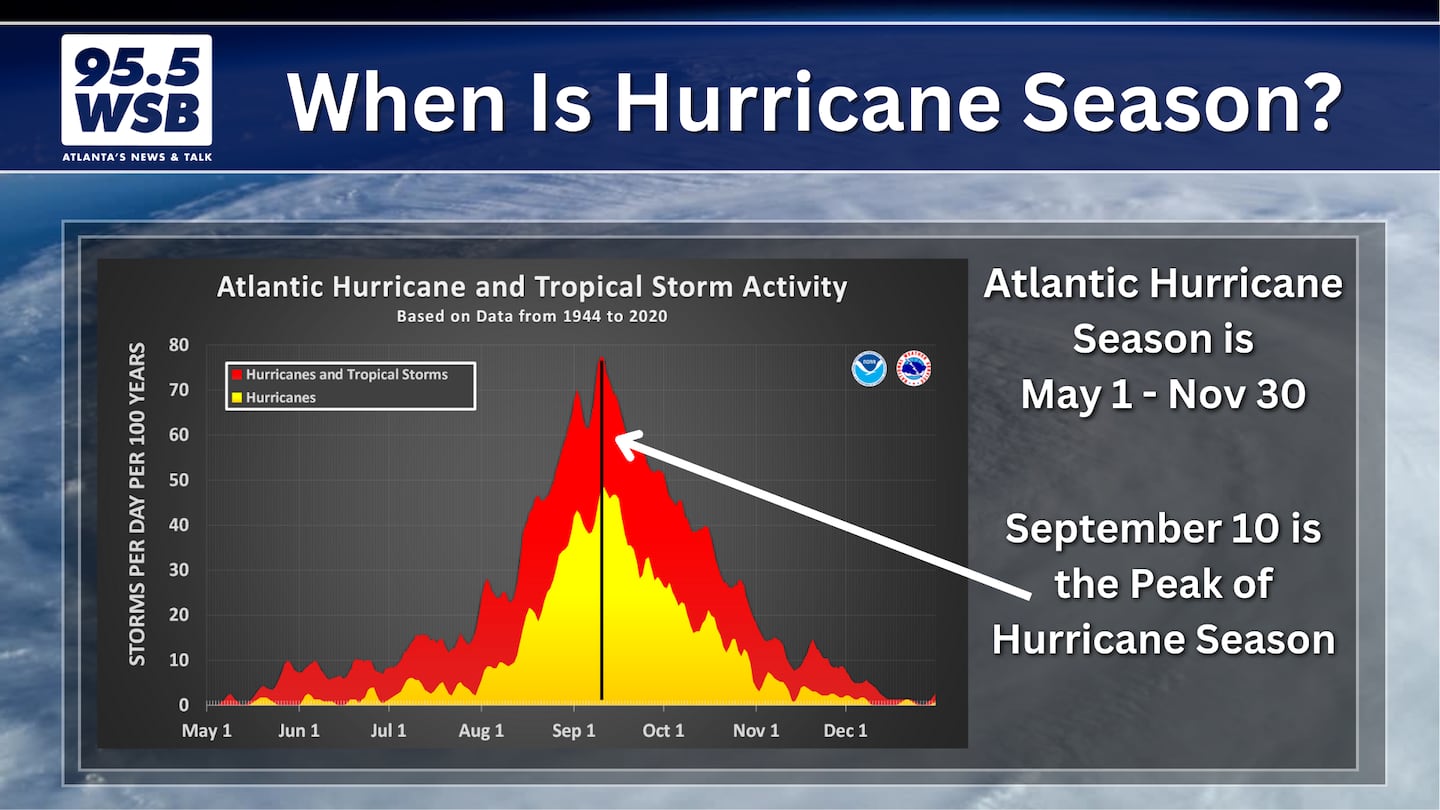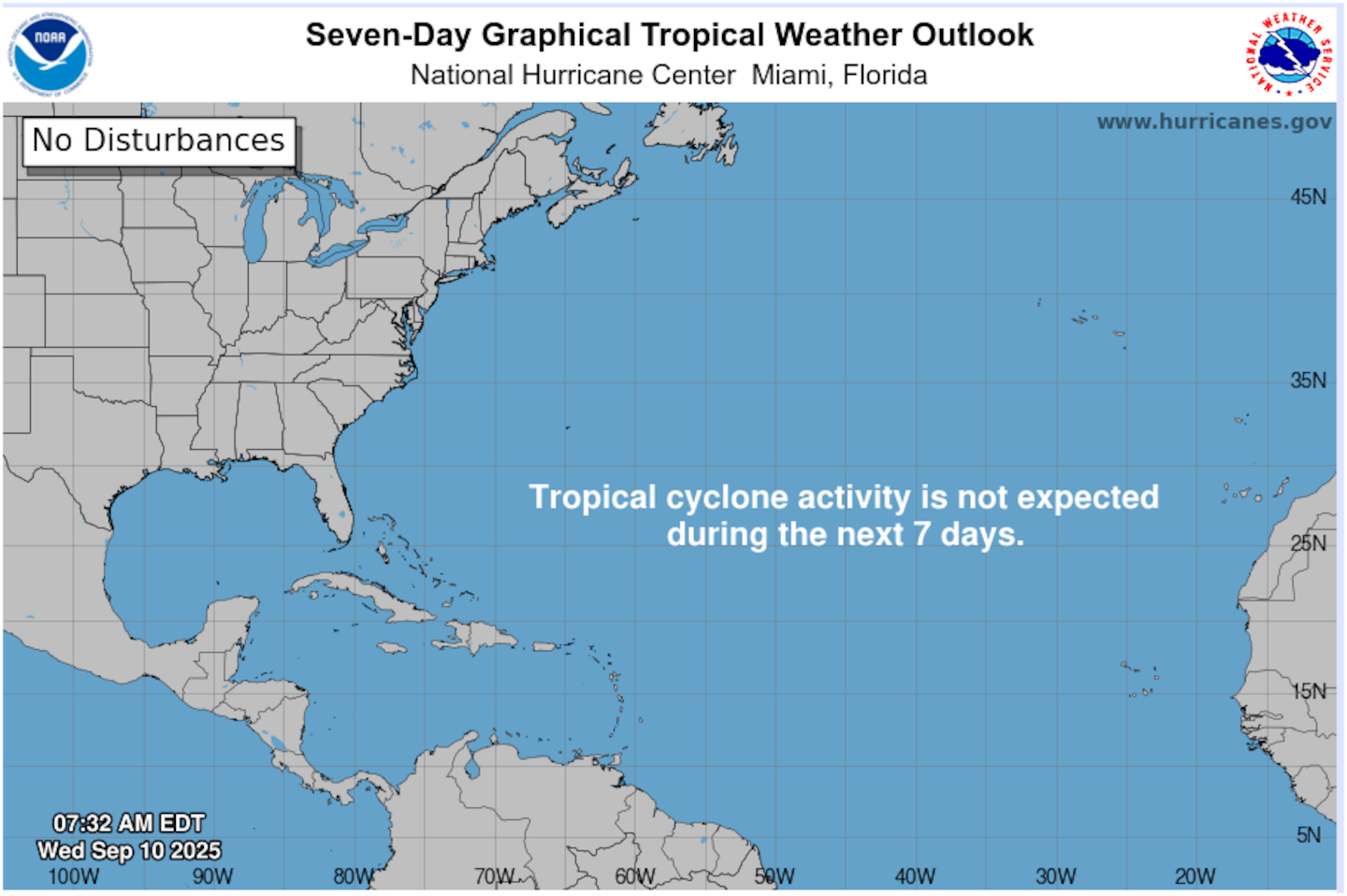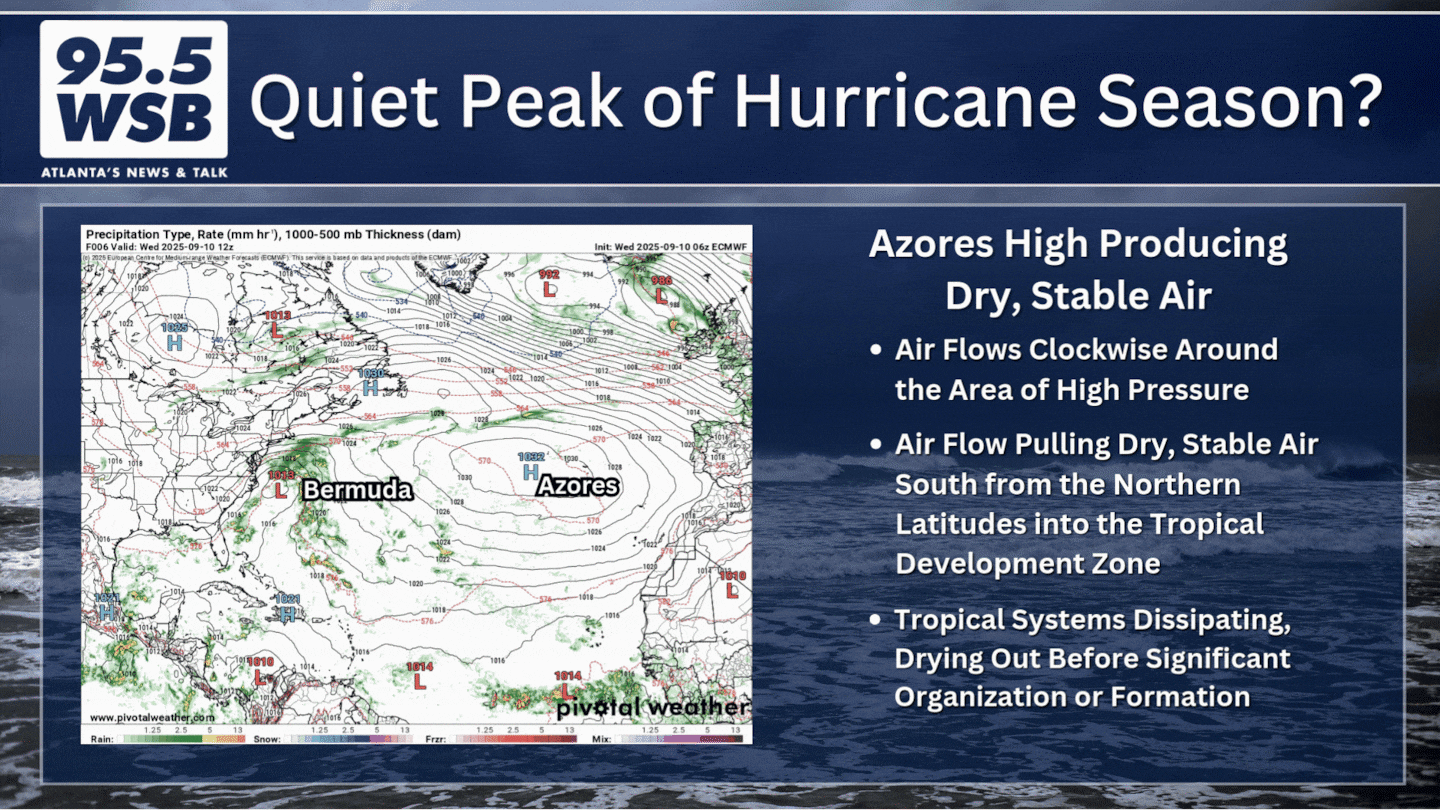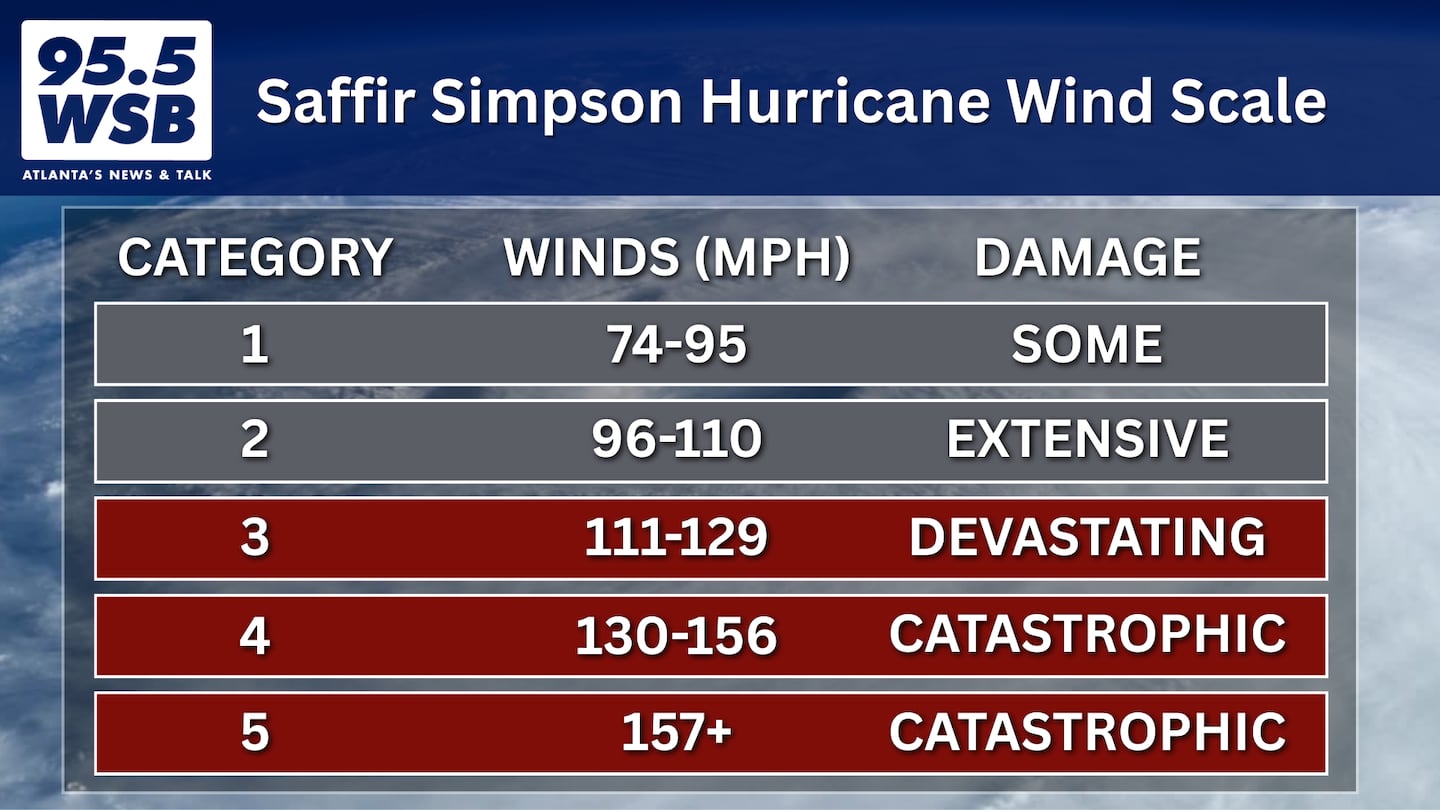ATLANTA — The Atlantic Hurricane Season began on June 1 and it will continue through November 30.
However, be aware that the peak of the season occurs much later, in Mid September.
In fact, the bulk of tropical storms and hurricanes form between August 15 and October 15, with the actual peak taking place on September 10.
According to the National Hurricane Center,the average first date for hurricane formation in the Atlantic Ocean basin is August 11. The average first date for a Major Hurricane (Category 3 or higher) formation is September 1, or around Labor Day.
This year, Hurricane Erin reached Major Hurricane status as a Category 5 storm on August 16.
Since then, no tropical storms or hurricanes have formed as the calendar crosses over the statistical “peak” of the Atlantic Hurricane Season.
According to the National Hurricane Center, no tropical development is expected over the next several days.
So Where the Storms?
Usually, high pressure sets up over Bermuda, allowing for tropical systems to develop in the Intertropical Convergence Zone near the equator.
As a result, storm clusters form off the coast of West Africa and drift west towards the Caribbean or the Eastern United States due to the Bermuda High.
Recently, the high has set up over the Azores, which is located further east and closer to the African coastline.
Air flows clockwise around areas of high pressure.
However, in the case of the Azores High, drier air is being pulled from the higher latitudes into the Intertropical Convergence Zone, causing storms to dissipate and dry out before they can even get started off the coast of Africa.
The Azores High is expected to linger through the next several days, but once this high moves east or dissipates, this would open up the Atlantic Ocean Basin for further tropical development.
Keep an Eye on the Back Half of the Season
Remember: September 10 marks the statistical peak of the Atlantic Hurricane Season, which means just as many storms form during the back half of the season as they do in the front.
Notable previous “second half” in recent history include the following storms, many of which were able to form in the southern Gulf as part of the “Central American Gyre”:
- Hurricane Helene (2024): Formed on September 24 and made landfall as a Category 4 Hurricane late September 26 before moving through the state of Georgia early September 27
- Hurricane Milton (2024): Formed October 5 and peaked to a Category 5 Hurricane on October 7. Milton made landfall as a Major Category 4 Hurricane near Siesta Key, Florida on October 10
- Hurricane Ian (2022): Formed September 23, briefly reached Category 5 status before making landfall as a Major Category 4 Hurricane near Fort Myers, Florida on September 28
- Hurricane Nicole (2022): One of the later hurricanes, Nicole formed on November 7 and later made landfall near Vero Beach, Florida as a Category 1 hurricane on November 10
Track the Tropics With Me!
Facebook: Christina Edwards WSB
Instagram: ChristinaWSBwx
Twitter: @ChristinaWSBwx
TikTok: @ChristinaEdwards955WSB
©2025 Cox Media Group













